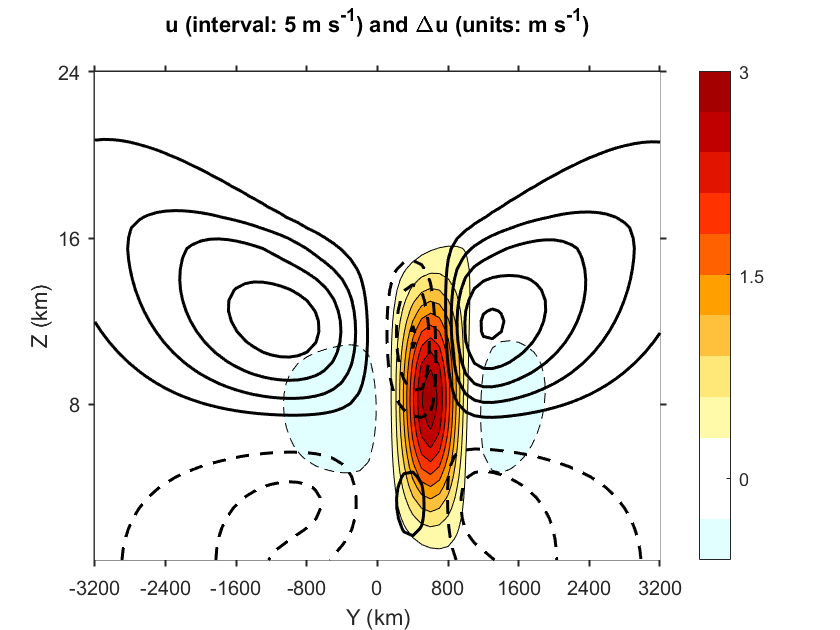Research about Intertropical Convergence Zone (ITCZ)

The meridional-vertical distributions of the zonal velocity with NCTs (thick contours) and the differential zonal velocity without NCTs minus with NCTs (thin contours with shadings) in the control simulation. The solid and dash contours denote positive and negative values. The zero contour is omitted. (From Ong & Roundy 2019)
Motivation
The double intertropical convergence zone (ITCZ) bias has been a problem in generations of Earth system models and has been studied for decades. Most global atmospheric models share a common approximation: the traditional shallow-atmospheric approximation, which neglects the nontraditional Coriolis terms (NCTs).
Modeling approaches
I developed an idealized 2D model to test the atmospheric flow response to prescribed ITCZ-like heating with and without NCTs (Ong & Roundy 2019). Moreover, I used state-of-the-art models to test the sensitivity of model simulated climate to the omission of NCTs. Specifically, I introduced NCTs to Model for Prediction Across Scales (MPAS) dynamical core and use it to drive Community Atmosphere Model (CAM).
Main finding
The idealized model results demonstrated that omitting NCTs yields a westerly wind bias in an ITCZ-like heating region (Ong & Roundy 2019). The state-of-the-art model results showed that NCTs reduces equatorial precipitation by 20% while enhancing off-equatorial precipitation and thus promotes a double-ITCZ pattern.
Model evolved
My work has directly contributed to the advancement of the MPAS and CAM models.
Modeling peers inspired
My work inspired E3SM development
Broader Impact and Prospects
This project underscores the need for improved representation of Coriolis effects in Earth system models. The ongoing exploration of this area holds promise for refining model accuracy and reliability.
Project Status
My ongoing main project (2018-)
